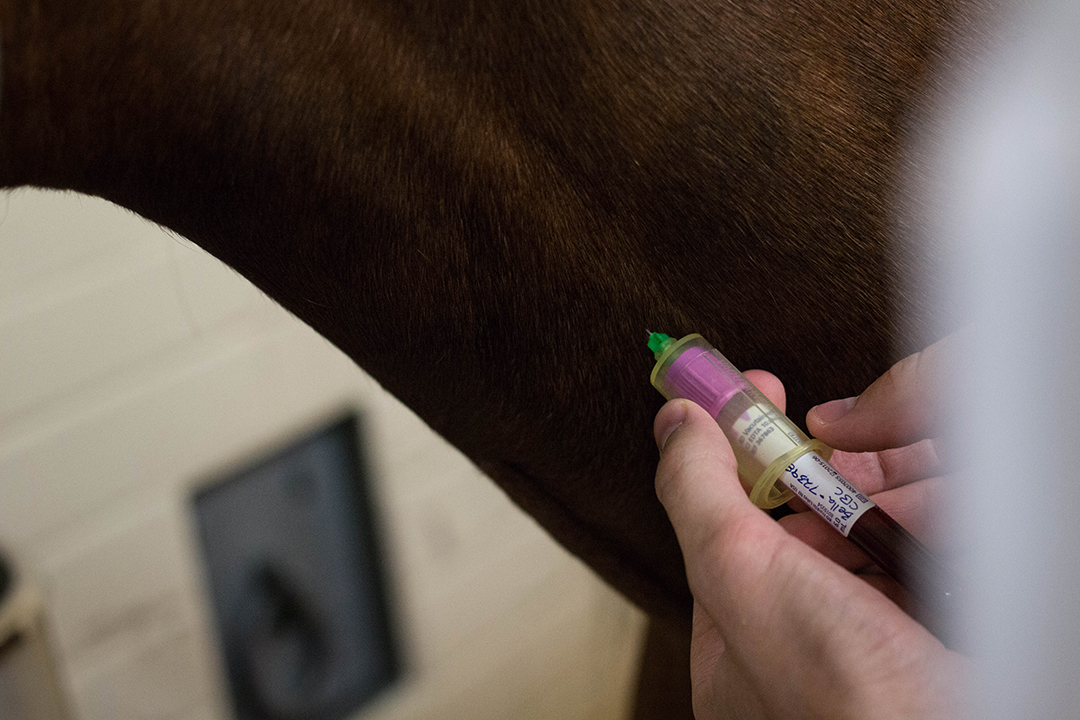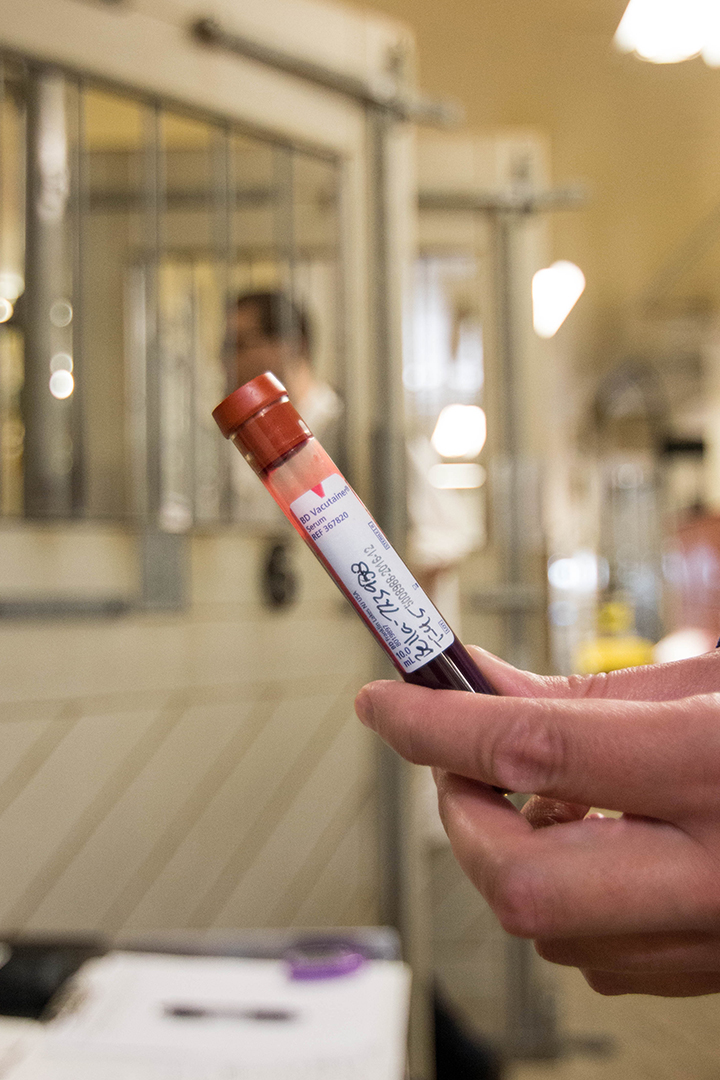
Baseline for hormone levels in western Canadian horses takes shape
As the percentage of older horses in Western Canada grows, so does the number of animals that are diagnosed with endocrine disorders such as pituitary pars intermedia dysfunction (PPID) and equine metabolic syndrome (EMS).
By Jessica Colby
That’s why establishing a hormone baseline for diagnosing these diseases in western Canadian horses has become essential, says Dr. Julia Montgomery, an associate professor at the Western College of Veterinary Medicine (WCVM).
She’s leading a study that’s measuring adrenocorticotropic hormone (ACTH) and insulin levels in healthy western Canadian horses to determine a region-specific baseline for these two markers, which are critical for making a definitive diagnosis of PPID or EMS.
PPID, formerly known as equine Cushing’s disease, is a hormonal disorder that affects older horses. This disorder occurs when the pituitary — a small gland in the brain — tells the body to continue producing ACTH when there are already high levels in the body.
“The number one risk factor for getting [PPID] is increasing age,” says Montgomery. “As more horses reach an increasing age and we have a higher population of geriatric horses, that becomes a more common condition.”
Horses with PPID will often have a winter coat that doesn’t shed in the spring, and they may sweat more than usual. The disorder may also cause a weakened immune system, which can result in conditions such as chronic sinus infections and corneal ulcers.
With EMS, horses may have additional fat deposits on their necks, shoulders and rumps. This endocrine disorder is caused by a horse’s inability to metabolize carbohydrates, known as insulin dysregulation. Horses with EMS may also develop laminitis — a condition of the foot that causes lameness and can lead to irreversible damage of the hoof structure.
“[EMS] is an increasing problem with increasing obesity in our horse population,” says Montgomery, who has diagnosed and treated many horses with EMS and PPID in her clinical work as a large animal internal medicine specialist at the WCVM Veterinary Medical Centre.

Diagnosing PPID and EMS as early as possible is critical to managing these disorders and ensuring the horses don’t develop laminitis or other serious health problems, explains Montgomery. Additionally, these two endocrine disorders can exist at the same time.
The WCVM researchers have completed the study’s first phase and are over halfway through the collection period for its second phase.
In the first phase, Montgomery and her research team worked with Saskatchewan’s veterinary diagnostic laboratory — Prairie Diagnostic Services (PDS) — to collect and test two sets of samples from a group of healthy horses, once in the spring and once in the fall.
The research team reported on the study’s findings in a paper, which is now under peer review with a research journal.
“There was a statistically significant increase in both ACTH and insulin levels in the fall compared to the spring,” says Dr. Paula Viviani, large animal medicine resident and a WCVM graduate student. “The association between the age of the horses and the outcomes differed seasonally, with a significant association with fall ACTH levels.”
In July 2022, the research team began collecting monthly blood samples from healthy horses and testing ACTH and insulin levels. This work will continue until July 2023, when the results will be analyzed and studied further.
“[Our] aim for the next six to eight months is to try and fine tune those reference values so that we have monthly values for each of those biomarkers,” says Viviani.
On February 1, PDS introduced equine metabolic testing (including ACTH and insulin levels) that are now available to all western Canadian veterinarians. It’s welcome news that Montgomery hopes will help to encourage an uptick in diagnostic testing and an earlier diagnosis of these endocrine disorders before affected horses develop severe clinical signs.
“The intent is to catch them [horses] early before they ever develop laminitis,” says Montgomery.
Before PDS offered these diagnostic tests, western Canadian veterinarians could only send horses’ blood samples to veterinary diagnostic labs in Ontario or New York. With additional time required for shipping, it could take a week or longer to receive test results.
Aside from the WCVM project, there are no baselines available for ACTH and insulin in western Canadian horses. Such baselines exist elsewhere in Canada, but due to varying weather conditions, these baselines are not always accurate for the country’s western provinces.
According to Viviani, these hormonal biomarkers can fluctuate not only by geographical region but can also vary depending on weather conditions and the time of day.
“We’re hoping to basically have more data available to interpret results of diagnostic testing [for horses] that live in our region,” says Montgomery.
“The value of reference ranges is twofold for diagnostic purposes and as a follow up to assess how well they [the horses] are responding to our management changes and our treatment,” adds Viviani.
The WCVM’s Townsend Equine Health Research Fund has supported both stages of this study that specifically addresses a regional need.
“It’s important for us to be able to do these projects that directly benefit the horses here, and [to] continuously improve our standards of care, the diagnostic testing — the care we can offer,” says Montgomery. “[It] contributes to the knowledge base for us, but also for our colleagues in Western Canada.”
